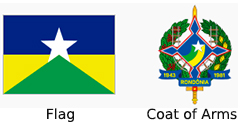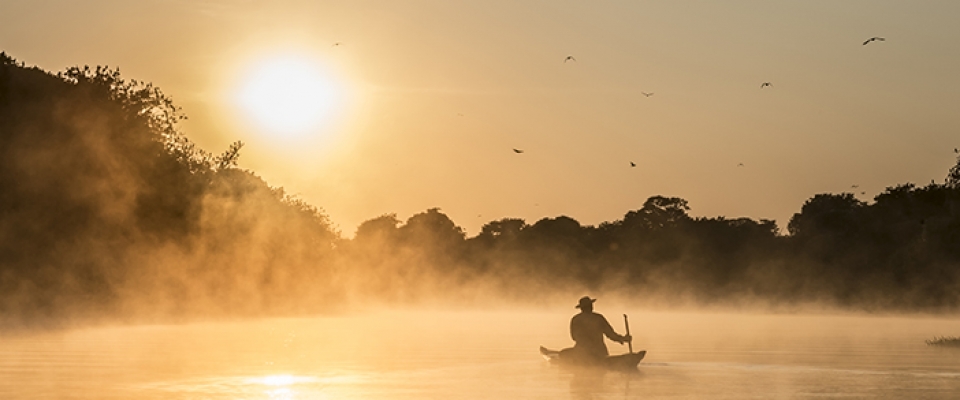Rondônia (RO)
The current area started being explored in the 17th century, but only after a hundred years or so, with the discovery of gold in the region, did it start to be populated. In 1776, the construction of the Príncipe da Beira Fort, at the margins of the Guaporé river, stimulated the creation of the first colonies, which prospered at the end of the 19th century, during the apogee of the Rubber Cycle.
Known as the Territory of the Guaporé up until 1956, Rondônia was only denominated a state in 1982, its name being a tribute to Marshall Rondon, who had earlier explored the region.
With jungle hotels and exotic cuisine based one local fishing, the state preserves its historic influences and is noteworthy for its lush river landscapes.
The Guaporé Valley is one of the main attractions, covering a wide variety of environments, still almost untouched by human hands. Being a transitional region between two ecosystems (the Amazon and the Pantanal), it has a stunning variety of fauna and flora.
The state also offers plenty of great options for adventure tourism, with canoeing on the Machado River, as well as abseiling and trekking through the Amazon Rainforest.
Rondônia is a mosaic of diverse cultures, thanks to the large number of immigrants attracted to the state thanks to agricultural expansion, most of whom came from São Paulo, Minas Gerais, Rio Grande do Sul, Paraná and Espírito Santo, in addition to countries such as Bolivia, Lebanon, Barbados and Japan.
The cultural diversity is obvious when one looks at the festival calendar, with a highlight being the Banda do Vai Quem Quer carnival block, which brings together over 100 thousand partygoers on the streets of the capital during carnival. Another important festival is the Arraial Flor do Maracujá, which has been going for 30 years, during the June festivities, and is a strong representation of north-eastern cultural influences in the capital.
In cuisine, there is a heavy influence from the various migrants, who make good use of the amazon’s fish, as well as Minas Gerais’s pão de queijo and mandioc flour, Paraná’s polenta and Rio Grande do Sul’s chimarrão and churrasco.
A veritable mosaic of Brazil’s varied cultures, with beautiful natural attractions, Rondônia is one of the country’s youngest states, yet even so, it has much to offer.

Capital: Porto Velho
Area (km2): 281,730.223
Population: 1,768,204 (2015)
Term for a person from this state: rondoniense; rondoniano-rondoniana
Dial code: 69
Bordering states: Mato Grosso, Amazonas and Acre

